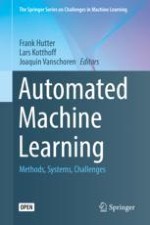
Open Access 2019 | OriginalPaper | Buchkapitel
8. TPOT: A Tree-Based Pipeline Optimization Tool for Automating Machine Learning
verfasst von : Randal S. Olson, Jason H. Moore
Erschienen in: Automated Machine Learning
Aktivieren Sie unsere intelligente Suche, um passende Fachinhalte oder Patente zu finden.
Wählen Sie Textabschnitte aus um mit Künstlicher Intelligenz passenden Patente zu finden. powered by
Markieren Sie Textabschnitte, um KI-gestützt weitere passende Inhalte zu finden. powered by